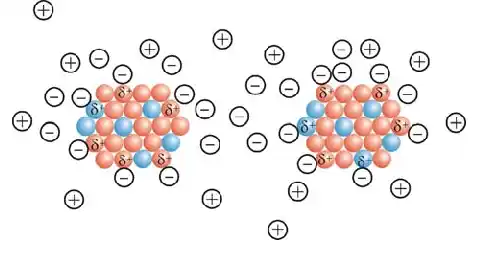افشین رشید
اُستادیار ؛ عضو هیات علمی دانشگاه آزاد اسلامی واحد علوم و تحقیقات تهران
621 یادداشت منتشر شدهA Summary of The Topic of Self-Assembly Simulation (Nanoparticles)

Note: Nanostructure is defined as any structure with one or more dimensions and measured in the nanometer scale range.
Nanostructures refer to materials or structures that have at least one dimension between 1 and 100 nanometersThe importance of the nanoscale is in changing the properties and characteristics of materials at these dimensions. Properties such as electrical conductivity, electromagnetic properties, etc. The beginning of changing the properties of materials by miniaturizing them depends more than anything on the type of material and the desired property.

For example, as the dimensions of a material decrease , some of the nanomolecular electromagnetic properties of the material, such as the conductivity of nanoparticle particles in the material, generally improve. This increase in strength does not occur only in the range of a few nanometers, and the strength of a material of several tens or even hundreds of nanometers may be much greater than that of a large-scale bulk material. On the other hand, changes in some properties, such as the conductivity in nanotransistors and the electromagnetic properties in nanowires, may occur in dimensions of only a few nanometers.

Self-assembly (nanoparticles) in nanostructures is a spontaneous process by which nanomolecules/nanophases are transformed into organized functional structures. Two important types of nanostructures are conductive nanoparticles (microstructured particles, often of semiconductor materials) and nanotubes CNTs (microtubes, usually of pure carbon). Self-assembled nanoparticles made of semiconductors change the nanostructures depending on their scale. Carbon nanotubes CNTs can conduct large amounts of electrical current, much more than nanowires and graphene nanoribbons. In general, self-assembly in nanostructures enhances the electromagnetic interaction of nanoparticle (nanoparticles) in conductive and semiconductor nanomaterials.

Conclusion :
In describing nanostructures, it is necessary to distinguish between the number of dimensions in the volume of an object that is on the nanoscale. Surfaces of nanostructures have one dimension on the nanoscale. Spherical nanoparticles on the nanoscale have three dimensions , i.e. the size of each spatial dimension is between 0.1 and 100 nm. The terms self-assembly in nanostructures are often used synonymously, although this performance can also reach the micrometer range.